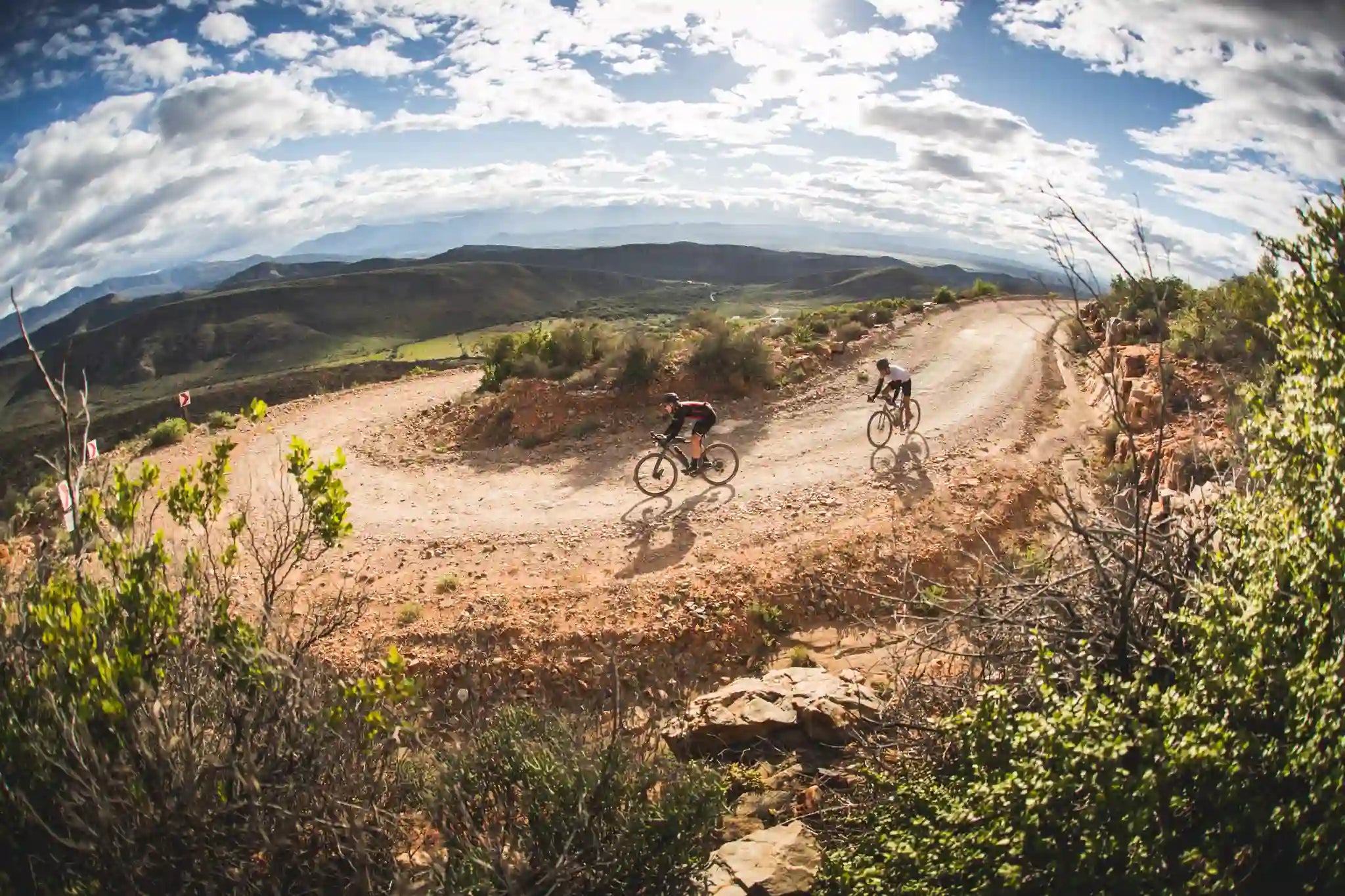
Rising popularity of Gravel Racing
Did someone say Gravel is the new golf?
We are spoiled for choice here in South Africa, with our endless gravel roads, spectacular scenery, and towering passes.
Mountain biking has always been a thrilling outdoor activity, catering to adrenaline junkies and nature enthusiasts alike. Over the years, it has evolved and diversified into various sub-disciplines, with one of the most exciting and rapidly growing niches being gravel mountain biking. This blend of endurance, adventure, and off-road exploration has captured the hearts of riders worldwide. In this article, we will delve into the rising popularity of gravel mountain biking, exploring its history, the allure of gravel roads, its impact on the biking industry, and the future prospects of this exhilarating sport.
1. A Brief History of Gravel Mountain Biking
Gravel mountain biking, often referred to as gravel riding, gravel grinding, or all-road cycling, has roots dating back to the early days of cycling. In the late 19th and early 20th centuries, riders used road bikes on rough, unpaved roads because modern mountain bikes didn't exist yet. This can be seen as the precursor to today's gravel riding, which combines elements of road cycling and mountain biking.
The contemporary gravel biking movement gained momentum in the United States around the mid-2000s and in South Africa we have seen a surge since 2020. Early adopters sought out adventure by exploring unpaved roads and trails, often using cyclocross or modified road bikes. With time, the industry took note of this emerging trend, and bike manufacturers started producing specialized gravel bikes designed for rough terrain, introducing features like wider tires and increased tire clearance.
2. The Allure of Gravel Roads
Gravel roads are the quintessential terrain for gravel mountain biking, and their appeal is undeniable. Several factors contribute to the allure of these unpaved paths:
Scenic Beauty and Solitude
Gravel roads often wind through picturesque landscapes, offering riders the opportunity to connect with nature and escape the hustle and bustle of urban life. Cyclists can immerse themselves in serene countryside, enjoying breathtaking vistas and the peacefulness that only nature can provide.
Versatility and Exploration
One of the most enticing aspects of gravel biking is the versatility it offers. Gravel roads can vary from well-maintained gravel paths to rugged, rocky trails. This diversity allows riders to customize their experiences, whether seeking a casual scenic ride or a more challenging off-road adventure. The sense of exploration is an inherent part of gravel biking, as riders never quite know what to expect around the next bend.
Minimal Traffic
Gravel roads are less traveled by motor vehicles compared to paved roads, making them ideal for cyclists who prefer less interaction with traffic. This minimizes the safety concerns that can come with road cycling, allowing riders to focus on the ride and the surroundings.
Access to Remote Areas
Gravel roads often lead to remote areas that might be otherwise inaccessible by conventional road bikes. This accessibility to off-the-beaten-path destinations adds a level of adventure and intrigue to gravel riding.
3. The Impact on the Biking Industry
The growing popularity of gravel mountain biking has had a significant impact on the biking industry as a whole:
Bike Manufacturers
Bicycle manufacturers have recognized the potential of the gravel biking market. They now offer a wide range of gravel-specific bikes, each designed to meet the demands of different riding styles and terrains. These bikes feature gravel-specific geometry, wider tires, disc brakes, and mounting points for accessories like bags and bottles. The availability of these specialized bikes has made it easier for newcomers to enter the sport.
Gear and Accessories
The surge in gravel biking has also led to an increase in gear and accessories tailored to gravel riders. From bikepacking bags to tubeless tire setups, the market now offers a plethora of options designed to enhance the gravel riding experience. The Wombat Gear lens colours are manufactured with the long, sunny gravel rides in mind.
Events and Races
Gravel events and races have become a significant part of the cycling calendar. These events range from casual rides and tours to competitive races that draw professional cyclists. Iconic events like the King Price Race to the Sun, the Cullinan2Tondeldoos, the Karoo Gravel Grinder, have garnered widespread attention and participation, attracting riders from across the globe. Even ultra events like the 36ONE MTB Challenge have seen a major increase in popularity.
The Gravel Biking Community
One of the driving forces behind the rise of gravel mountain biking is the sense of community it fosters. Gravel riders often share a passion for exploration, adventure, and the thrill of the unknown. This shared enthusiasm has led to the formation of tight-knit communities both online and offline.
Online Communities
Social media platforms and online forums have provided a space for gravel riders to connect, share experiences, and exchange tips and advice. These digital communities have played a crucial role in spreading the popularity of gravel biking and facilitating the organization of group rides and events.
Local Clubs and Group Rides
In many regions, gravel riding has led to the formation of local clubs and group rides. These gatherings provide opportunities for riders of all skill levels to come together, share their passion, and explore new routes as a community.
4. The Future of Gravel Mountain Biking
As the popularity of gravel mountain biking continues to rise, the future looks promising for this exciting sport. Several trends and developments are shaping the trajectory of gravel biking:
Innovation in Bike Technology
Bike manufacturers will likely continue to innovate, pushing the boundaries of gravel bike design. Advances in materials, suspension, and electronic components may further enhance the capabilities of gravel bikes.
Sustainable Riding
With a growing emphasis on sustainability, gravel riders are increasingly seeking environmentally responsible ways to enjoy their sport. This may lead to the development of eco-friendly events and practices within the gravel biking community.
Increased Inclusivity
Gravel biking has already demonstrated a high level of inclusivity, welcoming riders of all backgrounds and abilities. Efforts to make the sport even more accessible to a diverse range of participants may result in greater growth and acceptance.
Gravel mountain biking has evolved from a niche interest to a global phenomenon, captivating riders with its blend of adventure, exploration, and connection to nature. The allure of gravel roads, the impact on the biking industry, the sense of community, and the promising future of the sport all contribute to its growing popularity. As gravel biking continues to gain traction, it is clear that this thrilling and versatile form of cycling is here to stay, offering riders endless opportunities to explore the great outdoors while pushing the boundaries of their own capabilities.
Check out our Sport & Aftersport sunglasses perfect for a day out on the Gravel.
#justbelekker
Image Source: 36ONE























